False Facts About Squash You Thought Were True
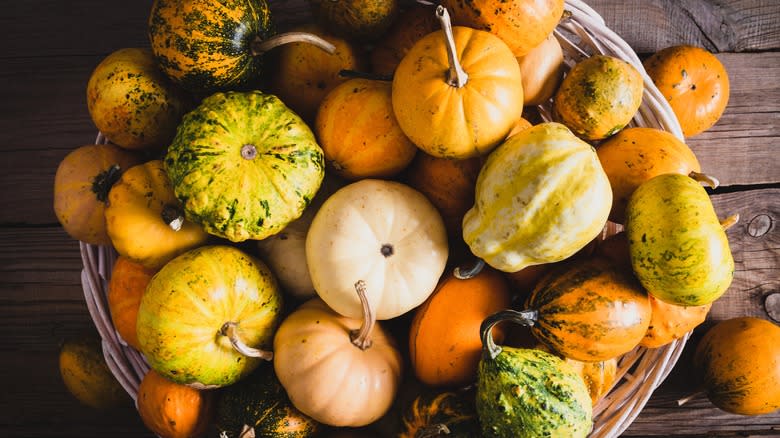
Squash comes in all shapes and sizes, from giant pumpkins to petite pattypans. It can also come wrapped up in misconceptions and false facts. For instance, many people believe that all squash are winter squash varieties, while others believe it's so difficult to chop and prepare for cooking that it's not worth the effort.
We wanted to get to the bottom of these misconceptions, so we chatted to three people in the know: two chefs and one food blogger and sustainable agriculture expert. These interviews helped us sort the fact from the fiction to bring you all the information you wanted about squash — and probably a little bit more.
Read on to explore some of the common misconceptions about squash and the truth behind them. It's an opportunity not only to learn more about squash, in general, but to also find out some of the amazing ways to cook with it. So, here are some false facts about squash you thought were true — along with the reality behind these fallacies.
Read more: Mistakes You're Making With Your Corn On The Cob
False: All Squash Is Winter Squash
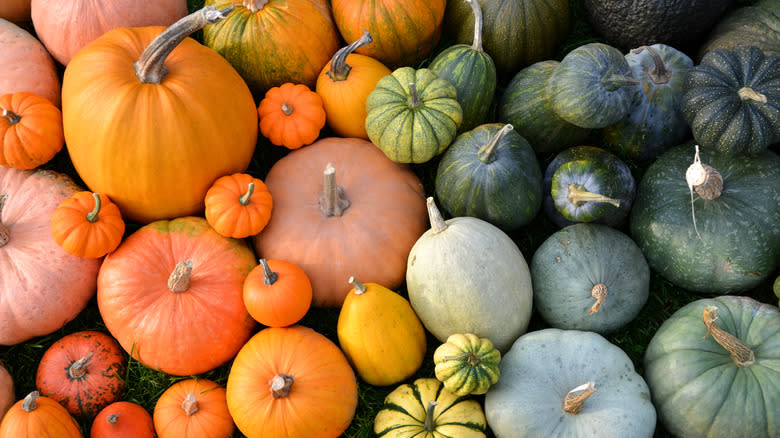
When you think of squash, do you picture butternut squash, acorn squash, and big orange pumpkins? If so, you're not alone. The name squash often evokes images of winter squash, but there's also summer squash to contend with. If you're only ever thinking of the winter and fall varieties, you're missing out on the beauty of summer squash.
"Winter squash and summer squash are so different but it's confusing since they share a last name, per se," says Meg Walker, founder and executive chef of MBM Hospitality. "The main difference is that winter squashes have thick, inedible skins and long storage times, while summer squashes have edible skins and are more moisture-rich, meant to be eaten soon after harvest," says Lindsey Chastain of food and sustainable farming blog The Waddle and Cluck.
So, don't expect squash to all be heavy gourds with orange-yellow flesh and large seeds that you need to scoop out before cooking. Zucchini and its summer siblings are also types of squash. Both have their places and their uses, so it's good to get to grips with both.
False: Squash Is Difficult To Prepare
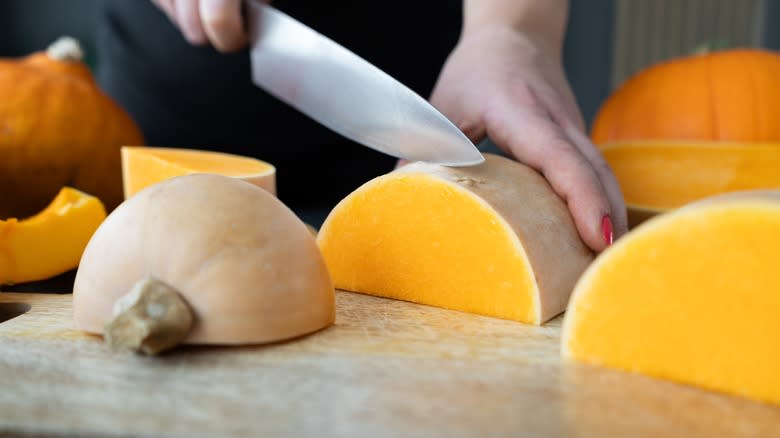
Some people believe that squash is always difficult to prepare. They have nightmares about trying to cut through tough flesh and the tedium of all that seed-scooping. But the fact is, squash doesn't always have to be difficult to prep. For starters, those worries are related to winter squash, but summer squash has much softer flesh. It's totally possible to easily and safely cut squash — even tough winter varieties.
"For winter squash, you need a sharp knife to cube it without slipping," advises Meg Walker. Knife sharpness really does make a huge difference. If your knife isn't the sharpest, Lindsey Chastain recommends piercing the exterior of the squash where you want to cut it before you attempt to split it in two. She also recommends that people "work slowly on stable cutting boards." She adds, "Scooping out pulp and seeds is easiest using strong spoons."
But, there are ways around tricky prep if you want to avoid it. "The beauty of squash lies in its versatility," says executive chef Victor Vasconcellos of Berimbau Brazilian Kitchen. "For instance, roasting a whole winter squash without removing the seeds is effortless. Simply wrap it in foil and bake it at medium heat for 40 to 50 minutes. Afterward, it's easy to open, remove the seeds, and serve the chunks, carefully discarding the skin."
False: You Cook Summer Squash And Winter Squash The Same
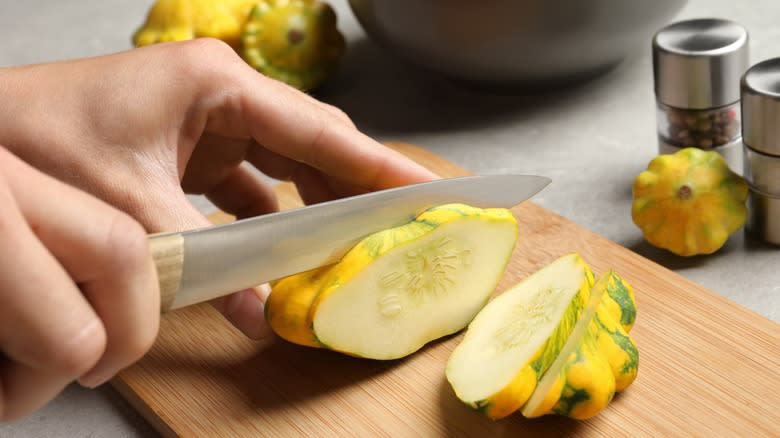
We've already gone over some of the differences between winter squash and summer squash types, but what about when it comes to cooking them? It's a common misconception that all squash is the same, so you should treat it the same, but these two broad types of squash need to be cooked in different ways.
"Summer squash, being more delicate and fresh, require less cooking time and can even be enjoyed raw," explains Victor Vasconcellos. "They're perfect for quick methods like sautéing, grilling, or stir-frying." So, you might shred them into salads, sauté them to eat with pasta, or grill them as part of veggie kabobs.
"Conversely, winter squash, with their thicker skin and sweeter taste, demand more preparation," Vasconcellos continues. "They're commonly roasted, cooked for soups, or baked, often with the skin removed to enhance their flavor." So, you're more likely to find winter squash in hearty meals, such as soups and stews. However, they're versatile enough to be roasted and put in salads and pasta dishes, blended into creamy sauces, and so much more. Expect a significantly longer cooking time for winter squash, since the flesh is harder and more dense when raw. The texture of summer squash means it only needs light cooking, if you cook it at all.
False: Squash Can't Be Stored For Long
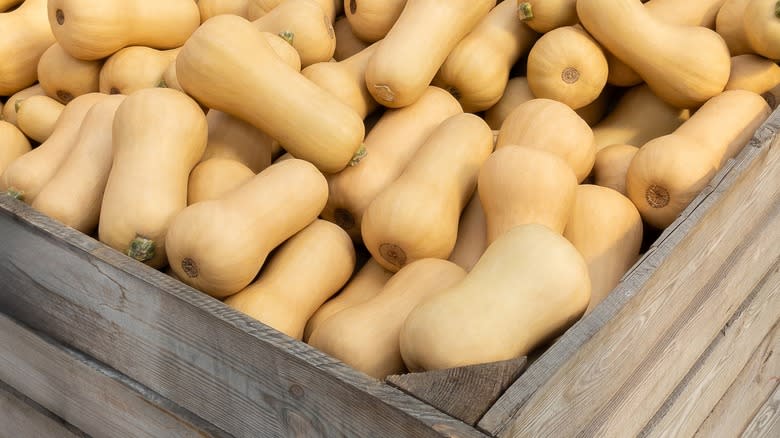
Most produce lasts a week or two once you get it home, so it would make sense to assume that squash is the same. That's why many people think that their squashes have probably gone bad inside if they've kept them for more than a few weeks. But if you believe that squash can't be stored for long, you're incorrect — at least in part.
"Winter varieties like butternut, acorn, and pumpkin take longer to mature and develop harder rinds that allow them to be stored for use over winter," notes Lindsey Chastain. So, properly stored, your winter squash can stay fresh for months. Store them in a cool, dry, well-ventilated spot and they can last for as long as 6 months, depending on the variety.
However, the same isn't true for all squash. "Summer types like zucchini, yellow squash, and pattypan mature quickly and don't store well long-term," Chastain says. Summer squash should be stored in the fridge and generally lasts for 5 to 7 days. Ultimately, you can store some squash for half a year and others for less than a week, so it's all about the variety.
False: You Always Have To Peel Squash
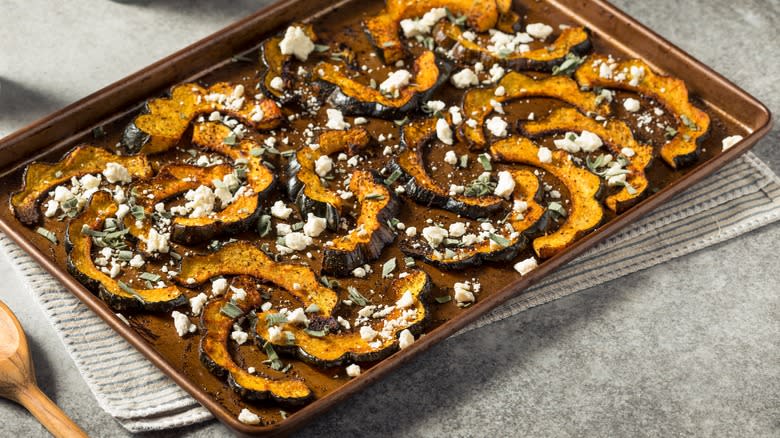
It's commonly believed that you always have to peel squash. This is part of what puts a lot of people off cooking with it. The peeling process seems like a faff and, ultimately, some cooks decide to give squash a wide berth. But you don't always have to peel squash.
Naturally, there's a difference between summer and winter squash. "For summer squash, the skin is completely edible when harvested young so peeling is optional," Lindsey Chastain remarks. In most cases, you'll leave the skin on summer squashes, unless the recipe calls for them to be removed.
With winter squash things are a bit more nuanced. In Chastain's opinion, "Winter squashes should always have their tough outer rind removed before cooking the inner flesh." However, Victor Vasconcellos notes that he leaves the skin on winter squash for some dishes. Meg Walker agrees that "you don't necessarily need to peel the squash prior to service — it depends on the preparation recipe you've selected." She adds, "I like roasting an entire Acorn Squash and making it a soup tureen. The skin keeps the tureens watertight."
Squash variety makes a difference in whether or not you should peel a winter squash. Some squash — such as delicata, acorn, and honeynut — have thin enough skin to eat. Others — including kabocha, butternut, and kuri — have much thicker skins that are unpleasant to eat and should always be peeled.
False: Squash Recipes Are Always Savory
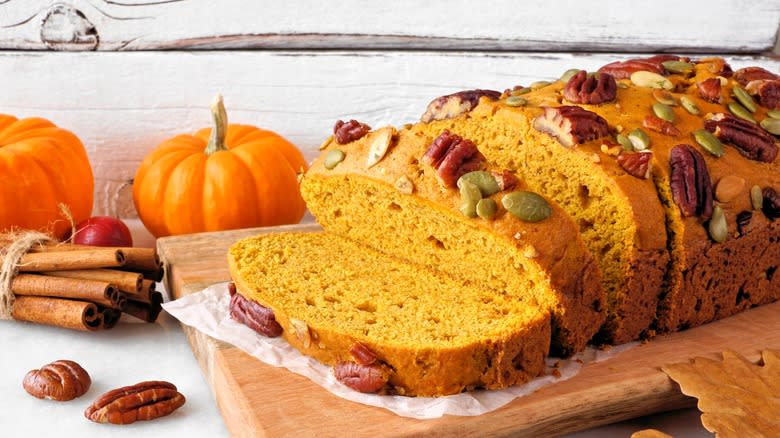
When you consider what to make with squash, you probably think of savory dishes. In fact, many people would assume that squash recipes are always savory. But when you look a little deeper, it's obvious that there are plenty of desserts and other sweet recipes that you can make with squash.
First off, there's that old favorite: pumpkin pie. This is made with pumpkin or other types of winter squash. So, you already know that squash dishes can be sweet — in fact, you probably have a go-to pumpkin pie recipe. But there are plenty more sweet dishes that you can make with winter squash, including cookies, muffins, loaf cakes, and even pudding.
But, it shouldn't be winter squash that gets all the fun. Zucchini bread is the obvious one, but you can make similar dishes with any summer squash. You can also use shredded summer squash in muffins, cakes, and cookies. It's nice to look beyond savory squash recipes every once in a while, especially if you've got a glut of squash on your hands.
False: Squash Is A Vegetable
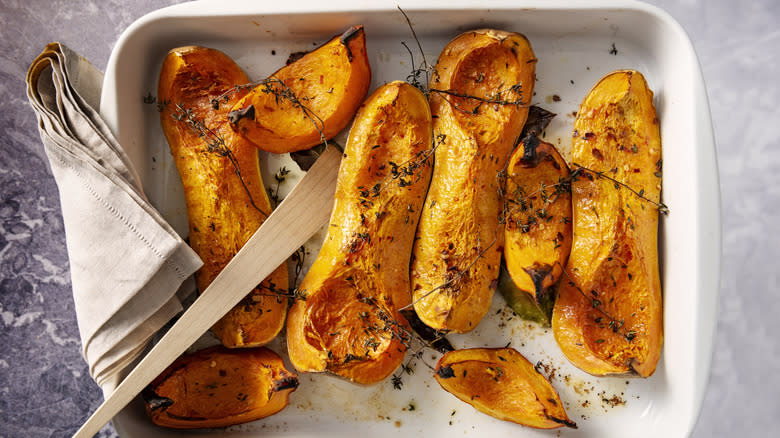
There's one thing we can all agree on is that squash is a vegetable, right? Right?! Well, actually, we hate to disappoint you, but squash isn't a vegetable — it's a fruit. According to Victor Vasconcellos, "In botanical terms, squash qualifies as a fruit because it develops from the flower of the squash plant and contains seeds inside. This aligns with the botanical definition of a fruit as the mature ovary of a flowering plant, typically containing seeds."
But, of course, just because something is technically a fruit, it doesn't mean it's eaten and or prepared like a fruit. You aren't exactly going to walk along taking bites out of an acorn squash like an apple. Lindsey Chastain notes that, "Because it's not sweet and tends to be prepared as a savory dish, it's typically considered and served as a vegetable."
Ultimately, yes squash is botanically a fruit, not a vegetable. But, admittedly, this is being pedantic about it. As a rule, we treat squash like a vegetable, predominantly using it in savory dishes, so for all intents and purposes, it's a veggie in culinary terms.
False: It Doesn't Make A Difference What Squash Variety You Use
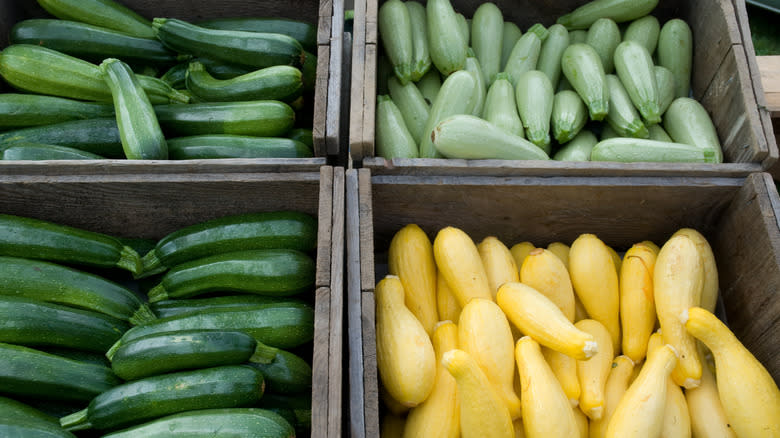
Most people think the squash variety you use in a recipe doesn't matter. Sure, it's obvious that you shouldn't substitute summer squash for winter squash, but it's not uncommon for folks to think you can use any winter squash in a recipe that calls for butternut or any summer squash in a recipe that calls for zucchini.
However, this isn't always the case. The variety of squash can make a big difference in a recipe due to variations in flavor, texture, and moisture content. There are so many types of squash and it's important to know when to use them. Some squash varieties are sweeter, while others are more savory or nutty. Some have stringy flesh, while others have soft, creamy flesh. Some varieties can bring too much moisture to a recipe, giving it the wrong consistency.
"One common misconception is that all squash varieties are interchangeable in recipes," says Victor Vasconcellos. "While some can be used similarly, each type boasts distinct flavors, textures, and cooking properties that can significantly influence the outcome of a dish." So, even professionals agree that you shouldn't just substitute one squash variety for another without thinking about it.
When choosing a squash, consider how its flavor and texture will complement the other ingredients. If you're following a recipe, ideally you should use the squash variety the recipe calls for. When you can't find the right variety, choose one with similar properties.
False: You Have To Throw Away The Guts And Seeds Of Winter Squash
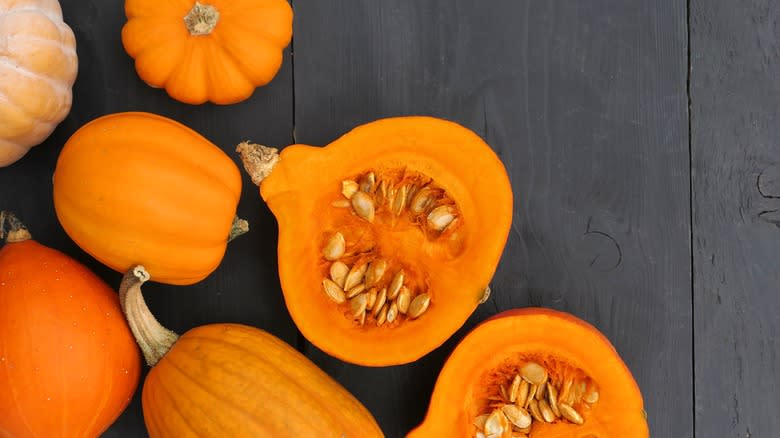
When you prepare winter squash, you have to scoop out the seeds and the stringy guts. A lot of people think that these seeds and guts have to go straight in the trash, but this is simply untrue. These parts of the squash are edible and packed with flavor, so there's no point in letting them go to waste.
"The seeds are tasty toasted with oil and spices," notes Lindsey Chastain. "You can also purée seeds and stringy fibers into flavorful squash seed pesto or veggie burgers," she adds. Victor Vasconcellos agrees that squash seeds are great roasted with spices. He also remarks that "you can then add them to granola, farofa, or enjoy them as a snack."
The guts of winter squash are less commonly used than the seeds, but that doesn't mean you have to throw them out. They can be puréed and incorporated into soups, stews, sauces, or baked goods like muffins or bread. You can also use them in homemade vegetable stock with other vegetables — or you can even use vegetable scraps to make homemade veggie broth.
By using the guts and seeds of winter squash, you reduce food waste — which is something to feel good about. Plus, they taste good and are great in a range of recipes. So, next time you're prepping a squash recipe, think twice before discarding these often-overlooked parts — they might become your new favorite ingredient.
False: There Are Limited Ways To Cook With Squash
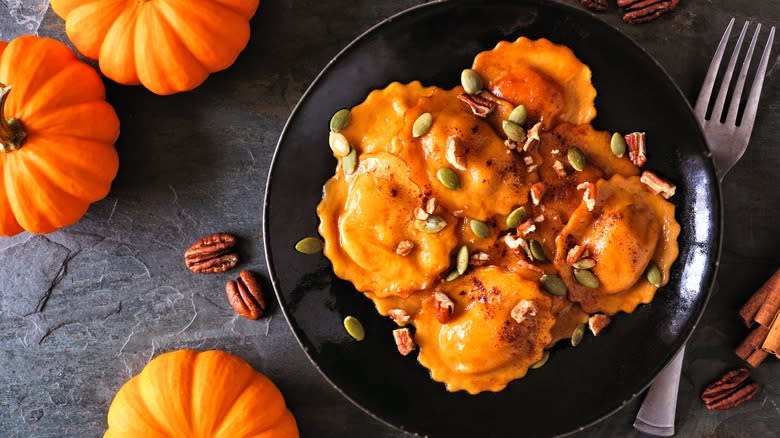
Have you heard there are only a few ways to cook with squash? Maybe you think you're limited to roasting winter squash or lightly sautéing winter squash? If this is what you think, then you're mistaken. There are so many ways to cook squash and so many recipes to enjoy it in.
We spoke to our experts about their favorite squash recipes and preparation methods. Victor Vasconcellos mentioned one of his favorite squashes, butternut. "I adore roasting it with a blend of salt, pepper, paprika, and a hint of cumin," he says. "Then, I pair it with homemade cheese, arugula, and pumpkin seed dukkah for a delightful dish." He adds, "As for summer squash, such as yellow zucchini, I enjoy seasoning them with salt, pepper, and olive oil and grilling them until they're beautifully browned on the outside and juicy inside."
Meg Walker remarks, "I loved cutting a butternut squash in half lengthwise and stuffing it." She mentions enjoying it with sage brown butter and gorgonzola cheese. Lindsey Chastain talks about some of the ways to season squash. "You can drastically change the flavors of squash by changing the spices you use like adding in ginger, turmeric, or chili paste," she explains. "In the summer, I like to add some zucchini and pattypan to our spaghetti sauce," she continues. "They also taste great when sauteed in butter, balsamic vinegar, or rice wine vinegar and soy sauce."
False: Squash Are Hard To Grow
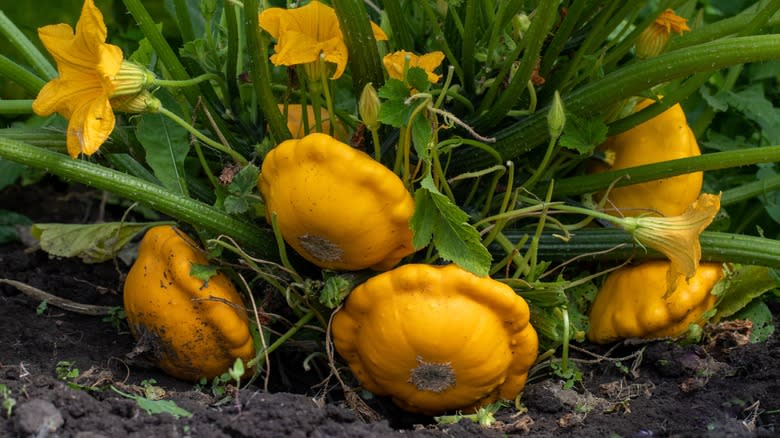
Despite the misconception that squash can be challenging to grow, the reality is that they are relatively easy to cultivate, making them a great option for novice and experienced gardeners alike. Lindsey Chastain, who's an expert homesteader, says squash plants "are really easy to grow once their basic needs are met." She says they "thrive when given sufficient warm weather, irrigation, healthy soil, and space to trail or climb." Adding that "the soil should be loose and have good drainage."
Squash plants are known for their resilience and adaptability to various growing conditions. These plants also grow quickly, often producing fruit within just a couple of months after planting seeds or transplanting seedlings. This rapid growth rate means you can enjoy a bountiful harvest in a relatively short amount of time. Another great thing about them is that they need minimal maintenance once established. Just water them regularly to keep the soil consistently moist, especially during hot and dry periods.
Chastain recommends that "you don't plant squash next to potatoes because the potatoes will take all the nutrients from the soil." She says, "It's also not a good idea to plant anything else that grows on a vine next to squash like cucumbers."
False: Squash Take Over Your Garden
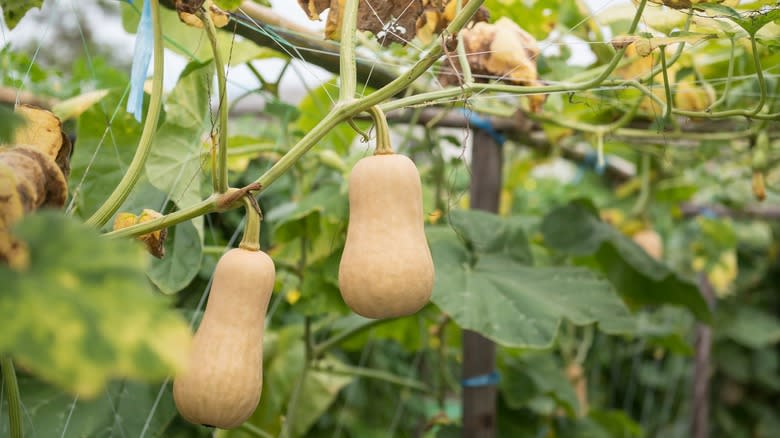
Another false fact about growing squashes is that they'll take over your garden, and this might affect other plants. But while they do need a reasonable amount of space, they aren't particularly unruly. So, if you want to grow your own, this shouldn't be a concern.
"There's a myth that squash vines spread aggressively and take over gardens, but most trailing varieties are actually well-mannered as long as given moderate space," says Lindsey Chastain. If you're worried about them having too large a footprint, she says that "the best option is to give squash a trellis to climb on that is sturdy so that it grows up instead of out." She notes that "cattle panels are a great, affordable and sturdy option for any vining plant."
So, if you want to grow squash and don't want the plants to take up too much space, letting them climb is a great option. However, even if you allow them to sprawl over the ground, they might not take up as much room as you think.
False: You Can't Eat Halloween Pumpkins
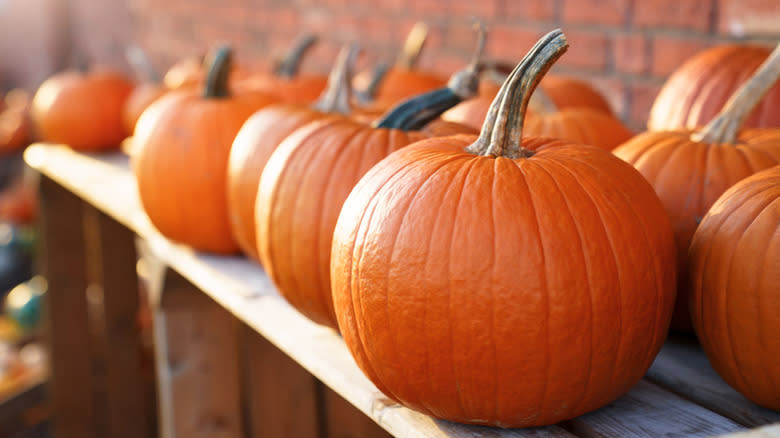
It's a widespread fallacy that Halloween pumpkins — also known as carving pumpkins — are inedible. These pumpkins are actually totally safe to eat. That said, they're grown for their size and thin, easy-to-carve skin, not for taste or texture. The flesh of carving pumpkins can be bland and is less sweet compared to varieties grown for eating, such as sugar pumpkins. Plus, their texture is often more fibrous and watery, which is less than ideal.
It's also worth noting that, if a pumpkin has been carved and left sitting around as a Halloween decoration, you probably shouldn't eat it afterward. Once a pumpkin has been cut open, it can grow bacteria and will eventually mold. If you're interested in using pumpkins for both decoration and eating, it's best to choose varieties bred to cook with. Sugar pumpkins are smaller in size with sweeter, denser flesh that's perfect for cooking and baking. By selecting these types of pumpkins for your porch decor, you can enjoy both their decorative appeal and their delicious taste without the risk of waste or food safety concerns. Just make sure to leave any pumpkins you intend to eat uncarved.
Read the original article on Mashed

